Preserving the Source

Feb. 2024, Issue #64

Leaping In
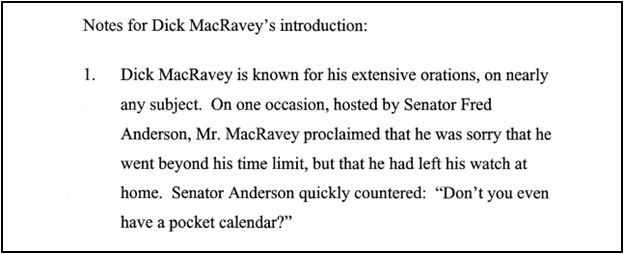
Have you heard the joke about the holes in the ground?
Well, well, well.
Leaping in with some water humor this issue, as a way to celebrate Leap Day. Additionally, the humorous clip above is classic Chips Barry, manager of Denver Water, prepping to introduce Dick MacRavey, director of the Colorado Water Congress. I have long been an advocate for using this calendar oddity to do something out of the ordinary!
We have some unusual offerings from the Water Resources Archive in this issue. One is news about our latest donation, and another is our newest publication.
As always though, we have a water puzzler, plus some tips on leaping in to research in the Water Resources Archive. We also continue to encourage Water Scholar applications and monetary donations in blurbs below.
To exchange water jokes, please contact me at any time.
– Patty Rettig, Archivist, Water Resources Archive

Groundwater History Report Available
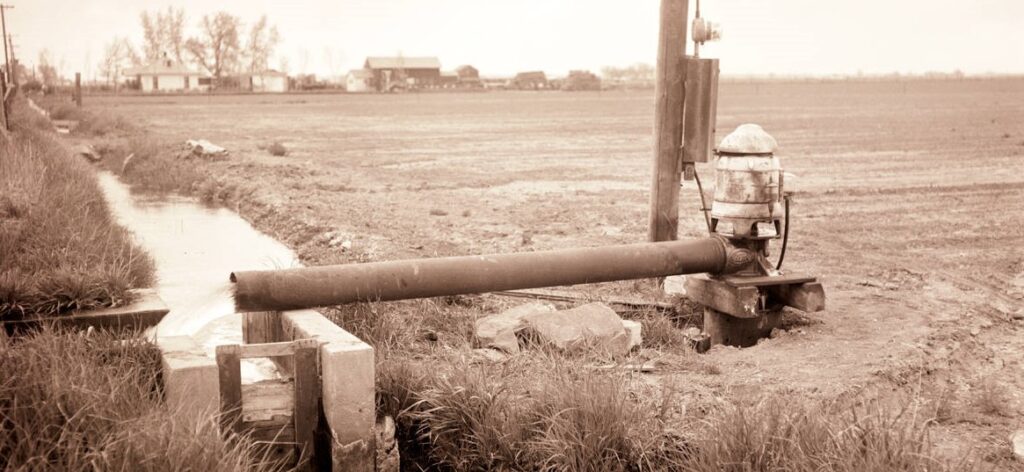
Using generous funding from long-time groundwater expert Bob Longenbaugh, the Water Resources Archive has published a historical context of Colorado groundwater. Meant to be a starting point, “Historic Overview of Groundwater in Colorado: Use, Education, and Technology” by Emily Ortiz, a recent CSU graduate who earned a master’s degree in history, looks at selected highlights over time.
The report focuses on three regions in the state: the South Platte and Arkansas alluvial aquifers, the San Luis Valley, and the Ogallala aquifer. Since there is no complete source examining the history of groundwater in the state, we hope this will spur further work. Please contact Patty with ideas!
(Image above: Groundwater well pumping water into an unlined ditch. From the Irrigation Research Papers.)

Parshall Painting
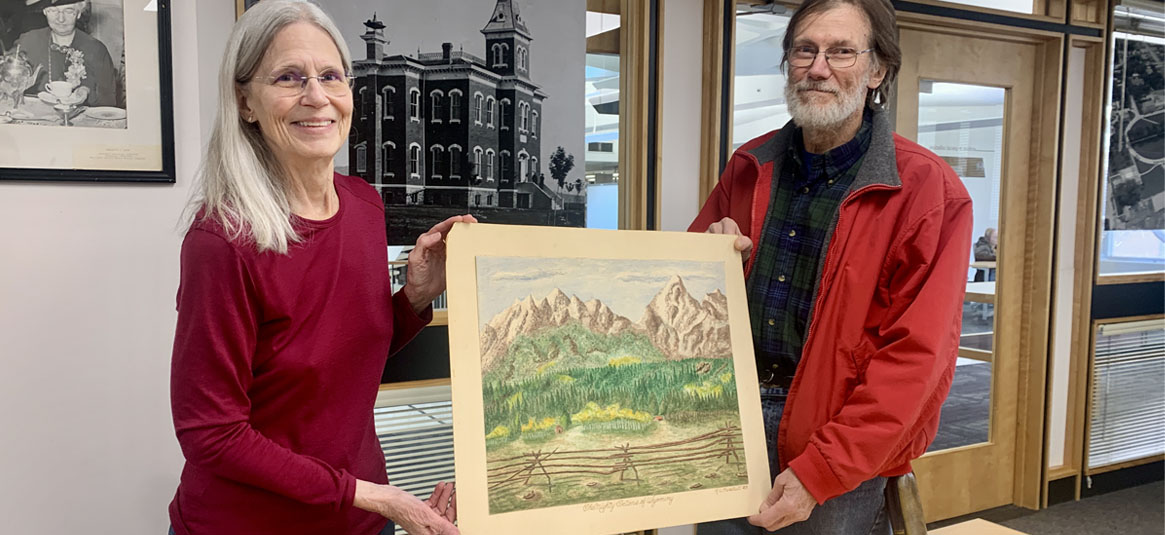
The newest donation to the Water Resources Archive is truly one-of-a-kind. Received Feb. 15 from donors Kaye Shedlock and Rick Hasbrouck who found it in an attic recess of their house, the painting by Ralph Parshall is nothing we could have anticipated receiving. Measuring 24×20 inches, the unframed watercolor painting is titled “The Mighty Tetons of Wyoming” and dated 1948. It will be added to our Parshall Collection, which contains reports, letters, photographs, and artifacts from across his career as an irrigation engineer at Colorado Agricultural College (now CSU) and the U.S. Department of Agriculture.
After finding the painting, Shedlock wondered what to do with it. Upon searching the internet for “R. L. Parshall,” she came upon numerous CSU web pages and quickly determined this was the best place for it. We greatly appreciate her thoughtfulness and generosity!
Best known for the Parshall flume, Ralph may have a growing reputation as an artist. Two of Parshall’s paintings surfaced in 2006 and are now at the Southeastern Colorado Water Conservancy District in Pueblo. If anyone knows of any other such paintings out there, please let us know!

Research Ideas
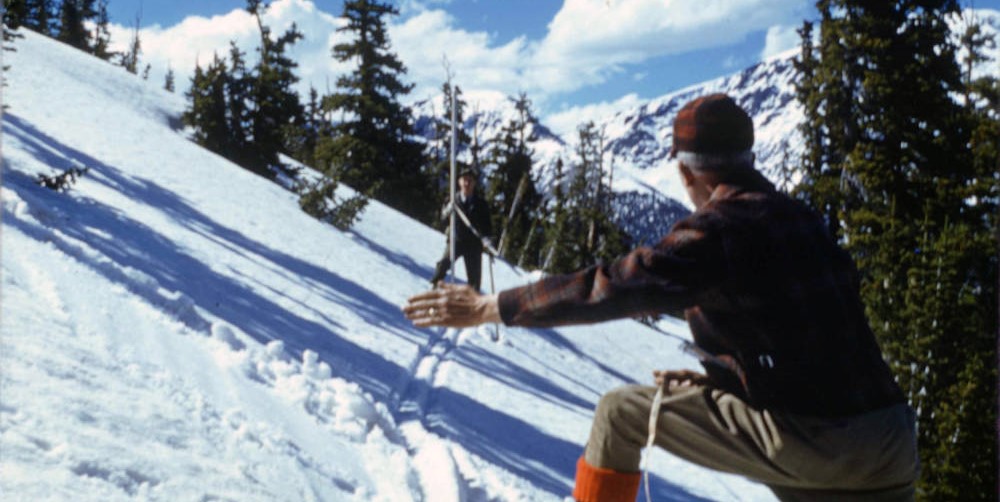
The Water Resources Archive is often contacted by researchers seeking interesting untold stories or unexamined files. They may want to complete a class assignment, write a book, make a film, or conduct another sort of project. We are always happy to brainstorm around a person’s interests, and offer here some recently shared ideas:
- A “big picture” history of the South Platte River. There are books that cover pieces of the South Platte (the Colorado-Big Thompson Project, Denver Water, etc.), but nothing about the basin as a whole.
- Colorado water-related innovations, from the Parshall flume, to the concept of interstate river compacts, to other water law and engineering advances.
- How ditches/irrigation/water allocation/administration of a particular area (county or river basin) works. Many areas could benefit from a historical deep dive.
- How the Cache la Poudre River got named a Wild and Scenic River.
- The evolution of snow surveys and runoff prediction in the West. (Photo above: Snow surveying at Trail Ridge Road, May 1941.)
- Anything in regard to Colorado groundwater history. More is needed!
If you’re intrigued, start your research by doing a collection finding aids search collection finding aids search or a digital materials search. Or, contact Patty at any time.

Water Puzzler
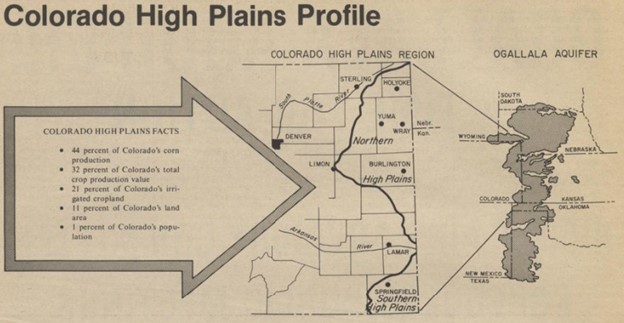
The Ogallala aquifer contains millions of acre-feet of water and underlies portions of eight states in the High Plains region, making it a vital water source for U.S. agriculture.
Groundwater pumping, beginning in the 1930s, and center pivot irrigation, developed in the 1940s, led to large-scale use of water from the Ogallala aquifer. Consequently, its enormous water supply began to decline, affecting the states it underlies to varying degrees. The aquifer is generally deeper in the Northern High Plains and shallower towards the south, but groundwater is withdrawn from the aquifer at greater rates in the southern and eastern High Plains states.
After being authorized by Congress in the 1976 Water Resources Development Act (Public Law 94-587), work began on a study of the trends, causes, and consequences of groundwater depletion in the Ogallala aquifer. In Colorado, the Colorado High Plains Advisory Committee helped to develop recommendations to address the aquifer’s depletion. The aquifer image above comes from a newsletter produced by the committee.
Ultimately, the Six-State High Plains-Ogallala Aquifer Study, and the summary report issued in 1982 by the U.S. Army Corps of Engineers, incorporated the work of federal agencies, land grant universities, state entities, and others, like the Colorado Water Resources Research Institute, in six of the eight states which the Ogallala aquifer underlies.
Which six states participated in the High Plains-Ogallala Aquifer Area Regional Resources Study?
a.) Colorado, Kansas, Nebraska, New Mexico, Oklahoma, and Texas
b.) Colorado, Kansas, Nebraska, New Mexico, Oklahoma, and South Dakota
c). Colorado, Kansas, Nebraska, Oklahoma, Texas, and Wyoming
Water puzzler written by archives assistant Lauren Oliver.

Make A Splash: Leap into the Ripple Effect of Giving
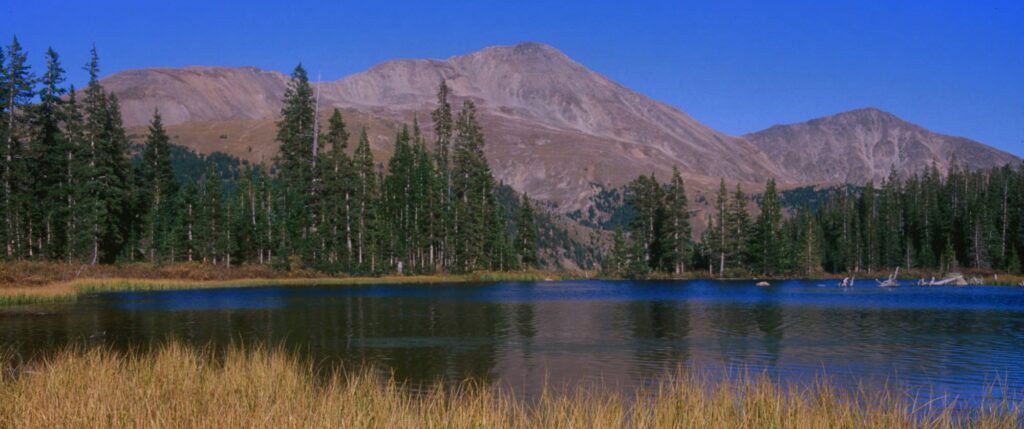
Take a leap to unleash the power of history. Support the Water Resources Archive and help us preserve the liquid legacy that flows through our great state and the American West. Your donation propels us forward, allowing us to collect, digitize, and share invaluable treasures—documents, maps, stories, photographs, and more—that unveil the intricate tapestry of water management, engineering marvels, legal milestones, and environmental conservation. (Photo above by Bill Green.)
Join us in this important endeavor, where every contribution creates ripples of impact. Together, we navigate the currents of knowledge, ensuring that these vital resources are accessible to all who seek to understand and protect our most precious asset. Make a gift today!
If you have questions about giving, contact Libraries Associate Director of Development Thea Rounsaville.

Spread the Word: Funds Available for Research

Through the support of generous donors, the Water Resources Archive offers the Water Scholar Award. This funding both helps researchers access the archive’s collections and facilitates the creation of research output and related outreach. Need to spend a week in Fort Collins using multiple collections for in-depth research? Have a completed archival project and need funds to present the research? Check out the current Water Scholar Award criteria and application, and watch for an update in the fall. The annual deadline is January 31. Application is open to students and professionals alike. Please spread the word to your colleagues, friends, and neighbors!

Puzzler answer:
a.) Colorado, Kansas, Nebraska, New Mexico, Oklahoma and Texas
This electronic newsletter provides updates about the Water Resources Archive. To be added to this distribution list, please send an e-mail that includes your name and a request to subscribe.
This newsletter is created by Patty Rettig.
Designed by Demi Connelley

